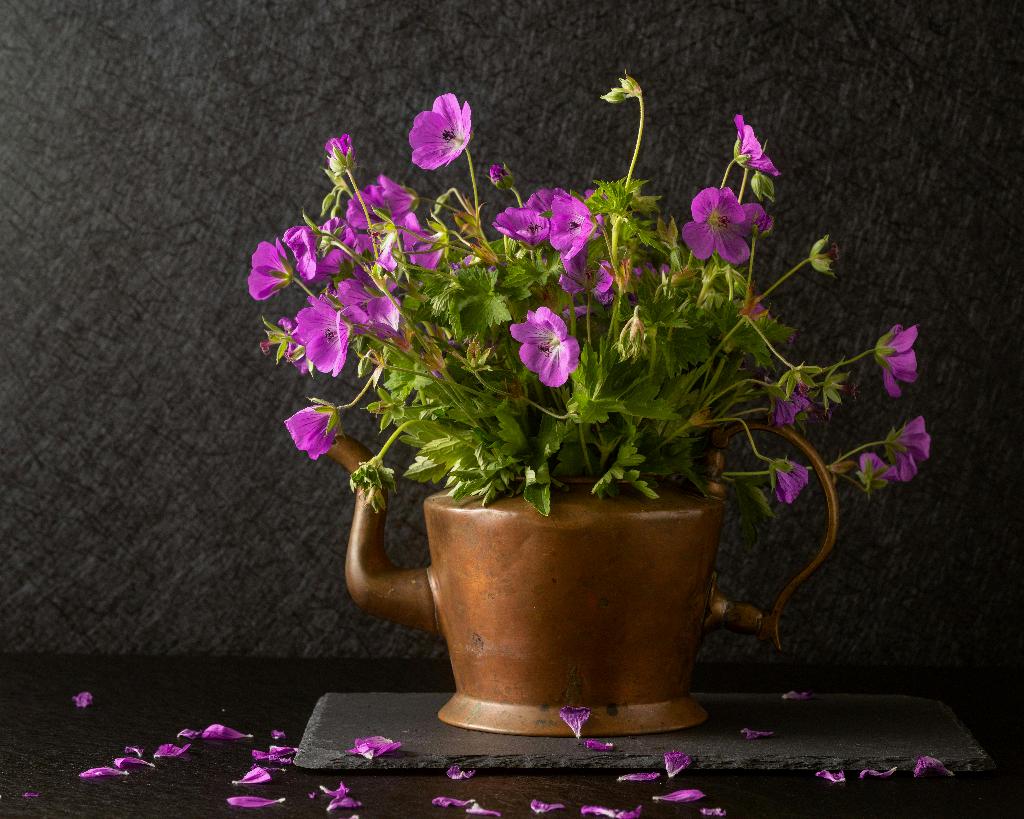One common issue that many gardeners face when caring for geraniums is the yellowing of their leaves. This can be a sign that something is amiss with your plant, but fear not, as there are several reasons why geranium leaves may turn yellow.
One of the most common reasons for yellowing leaves on geraniums is overwatering. Geraniums are plants that prefer dry conditions and do not require frequent watering. If the soil around your geranium is consistently moist or wet, it can lead to root rot and ultimately cause the leaves to turn yellow.
To prevent overwatering your geraniums, it is essential to only water them when the top inch of soil feels dry to the touch. This will ensure that your plant is receiving the right amount of moisture without being waterlogged.
Planting geraniums in well-draining garden soil or using containers with ample drainage holes can also help prevent overwatering and keep your plant healthy. Good drainage is crucial for geraniums to thrive and avoid issues like yellowing leaves.
Another factor that can contribute to yellowing leaves on geraniums is insufficient sunlight. Geraniums require bright, indirect light to photosynthesize properly and maintain their vibrant green foliage. If your plant is not receiving enough sunlight, the leaves may start to yellow as a result.
Ensure that your geraniums are placed in a location where they can receive at least 6 hours of sunlight per day to promote healthy growth and prevent yellowing of the leaves. Consider moving your plant to a sunnier spot if you notice that the leaves are beginning to lose their green color.
Furthermore, nutrient deficiencies can also cause geranium leaves to turn yellow. Lack of essential nutrients such as nitrogen, iron, or magnesium can affect the overall health of the plant and result in yellowing leaves.
Using a balanced fertilizer specifically formulated for flowering plants can help provide your geraniums with the necessary nutrients they need to thrive. Be sure to follow the instructions on the fertilizer package and avoid over-fertilizing, as this can lead to nutrient imbalances and other issues.
Pest infestations are another potential cause of yellowing leaves on geraniums. Insects like aphids, spider mites, or whiteflies can feed on the plant’s foliage, causing damage that manifests as yellow spots or discoloration.
Inspect your geraniums regularly for signs of pests and treat any infestations promptly to prevent further damage. You can use natural remedies like neem oil or insecticidal soap to help control and eliminate common garden pests without harming your plant.
Environmental stressors such as extreme temperatures or fluctuating humidity levels can also impact the health of geraniums and lead to yellowing leaves. Geraniums thrive in temperatures between 65-75°F and prefer moderate humidity.
To avoid stress-related yellowing of the leaves, try to maintain a consistent environment for your geraniums by keeping them away from drafts, vents, or sudden temperature changes. Providing adequate humidity by misting the leaves or using a humidifier can also help keep your plant healthy and vibrant.
In conclusion, yellowing leaves on geraniums can be a sign of various issues, including overwatering, lack of sunlight, nutrient deficiencies, pest infestations, or environmental stress. By understanding the potential causes of yellowing leaves and taking proactive measures to address them, you can help keep your geraniums healthy and thriving in your garden or home.

